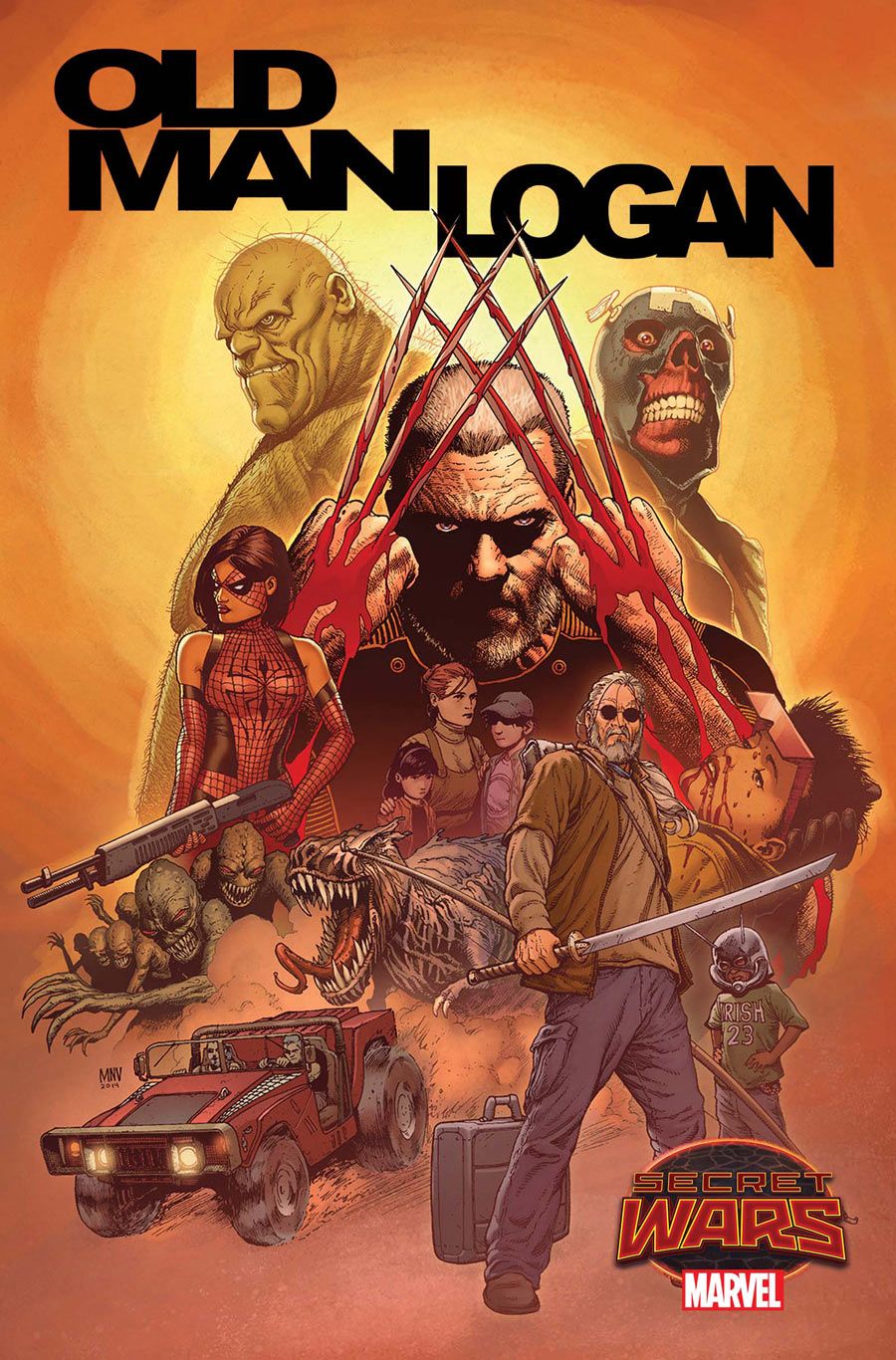"Old Man Logan" #1 expands the tone and scope of Mark Millar and Steve McNiven's original story by embracing the character's Spaghetti Western and ronin influences through Brian Michael Bendis' engaging script and Andrea Sorrentino's career-defining art. It's violent and dark and may be the best "Secret Wars" remix to be released so far.
Bendis picks up the story shortly after Millar's tale, with a wandering Logan watching over the last grandson of Bruce Banner. Readers don't need to be well-versed in that story to enjoy this one; the writer does a great job of delivering set pieces that show off Wolverine's status in this new world as well as his own view of his surroundings. The small focus of a man wanting only to clean up a world he helped destroy is interrupted when an Ultron skull falls from the sky. Logan, believing this to be a portent of bad things to come, decides that he must find out what happened and, in order to do so, has to do the unthinkable: climb over the Shield, the wall that extends across Doomworld, separating many civilizations from the robotic, possessed and deceased hordes that ring around civilization.
Under Bendis, Logan's weary, haggard voice is a welcome light in a bleak world, reminiscent of the Man With No Name in Sergio Leone's classic trilogy. His guilt consumes him and forces him into solitude, striking at gangs that are throttling territories and then riding back off into the sunset. The opening sequence, a takedown of Gladiator and his gang in Las Vegas, is brutal, well-paced and a perfect capsule of what this region of Doomworld is like and how unforgiving the tone of this comic book will be.
Sorrentino, in conjunction with colorist Marcelo Maiolo, delivers an inspired sequence that blends entertaining character work with stylized panel layouts and color shifts that convey both fluidity and tonal breaks. As the action progresses and the lights go out, Sorrentino lays out stutter-step panels across several pages, black panel followed by flicker of violence followed by darkness until someone gets lucky and throws Logan through a window. The gorier scene becomes the color Maiolo drains from the characters and the page, forcing readers to face the stark reality of the blood and violence. The following pages -- with inlay panels of small actions that advance the pace -- also give a clear, well-considered flow to what could be chaotic swinging; with this art team, violence is a ballet and not a rave. The remaining quiet of the story is also beautifully illustrated with great acting, but it's the opening action that will have readers' tongues wagging.
By focusing on one protagonist and aiming at a bit more mature storytelling, Bendis' scripting becomes more focused, dramatic and thrilling. Sorrentino's scratchy linework and negative-space panel layouts are gorgeous icing on the cake. The remaining issues of this series have a lot to live up to when the storytelling on a debut issue is this good but, if the creative team can live up to the task, then "Old Man Logan" may become an instant classic. Readers who miss Wolverine or love artful violence need to check out this series posthaste.

